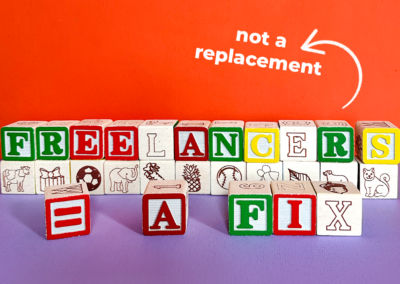Earlier this year, I attended a session at the 4As MAIP Summit on future-focused strategies behind global — and local — media presented by Yessenia Morales, global vice president of partnerships at IPG data firm Kinesso. Morales was one of the breakout session presenters at, singlehandedly bucking the belief that people are afraid of personalization (they do).
Two major points hit me like a ton of bricks.
- Desire for personalization trumps data concerns.
- Data concerns are real, but lack of education is equally problematic.
I was moved. At the end of her presentation, the room discussed the intersection between value and privacy. One of the main focuses at the time was Apple removing cookies out of Safari, and how Google made a commitment to remove cookies in the next few years.
So what’s next?
My personal ad industry experience doing personalization work around membership, loyalty and CRM, as well as some deductive reasoning, took me to a single response — biometrics.
No Longer Fiction
Biometrics can be defined as “the science of tracking and analyzing people’s unique biological characteristics.” It, and personalization, is no longer a distant fiction for advertisers: they’re here. And, it could bring fresh, new value to the ad industry, especially in a digital-first, post-COVID-19 world.
In our industry, we use biometrics in a number of ways.
It can shape UX/UI design around privacy. Think about when you load your Starbucks gold card, sending money through your Chase app, getting your rewards at Walgreens, or checking your test results from your health provider.
Biometrics can also measure our creative’s work, through neuromarketing. As science fiction as this sounds, there are many leading companies making sure their creative is being tested, so teams have objective feedback based on internal and external triggers like blood pressure, eye movement, facial expressions, and even brain scans.
Then, maybe the holy grail: leveraging large amounts of big data to help us form strategies and creative for personalization purposes by developing creative systems where the creative is an active part of the data infrastructure.
According to Counterpoint Technology Market Research in 2020, 64% of smartphones worldwide will ship with facial recognition technology, up from just 23% last year. These devices not only set a new expectation and acceptance in the market, this type of data intelligence is incredibly important to develop better, effective work.
The Drum’s “How biometrics is transforming TV and video,” the author states that “biometric research reveals patterns, trends and associations relating to human behavior giving brands areas for optimization at a micro level.”
The implications on a micro level were what I discussed with Ms. Morales. It’s this rabbit hole where a future of work driven by biometrics at the center will make an agency valuable.
Simplification is the Value
“Brands are kind of pivoting and having that discussion as we speak, they’re thinking about ‘how can I do more of an addressable campaign on a one to one level,’” Mrs. Morales said. “You want to get things done as quickly as possible. I think with ad personalization, that’s exactly what it’s meant to do. It’s meant to give you the information and in the least amount of clicks that you need it to be done.
It felt clear from talking to Mrs. Morales that making life simpler for consumers still drives our work. The truth, however, is that making things simple looks a little different.
“I think that’s the beauty behind personalization because you’re talking to me,” Morales said, “you’re not talking to the broadness of me.”
However, there has been an awakening in the market. People— not just consumers —are becoming more aware of the many areas data is being collected, and they understand there’s value behind their decision making.
“People are starting to realize exactly what information is surrounding them. In the wake of all the regulations that are coming about, obviously GDPR (General Data Protection Regulation) and CCPA (California Consumer Privacy Act) it’s more evident now than ever how powerful data is.” Mrs. Morales said. “How it can be used for good, but also how it can be used for bad as well. And I think that’s what businesses are struggling with at this time. It’s finding that fine divide to make sure that we stay on the line of the good side and that it’s not used or mishandled.”
Empowering People Through Education
Last year Interpublic Group (IPG), owners of Kinessa, acquired data giant Acxiom. This addition to the holding group has brought transparency into the forefront for Morales, who also serves as co-chair of IPG’s Women’s Leadership Network.
“We hired an entire task force specifically to deal with just digital responsibility and data usage,” she said. “Their sole responsibility is to make sure that we are following the right protocols and to make sure that our business and our clients’ data [are] safe.”
For advertisers, data intelligence has always been an important part of finding insights that move their target audiences with big ideas. But with older methods of data collection going away and this new level of biometric data, a new sense of responsibility is influencing how we move forward.
“It’s really about thinking, ‘how are you going to change that targeting model? What’s going to be the dynamic?” Mrs. Morales said. “At IPG, we’re changing the dynamic. Instead of it being a blanket strategy, it has to be a one-to-one direct engagement. And we’re starting to create and focus on addressable marketplaces, where we craft something customized for advertisers to really hone in on the appropriate people.”
Mrs. Morales added, “We operate in such a transparent model that I know for a fact that that doesn’t exist within our walls, but I’d be naive to think it doesn’t actually happen.”
Even though there is a lot of stress for agencies to be transparent and responsible with people’s data, ultimately she believes consumers will have to be thoughtful and educated about their data.
“We’re just at the cusp of this conversation. Data privacy wasn’t a thing 10 years ago, no one cared, you know?” she said. “Now that everyone’s thinking about it, I just almost feel like there’s a lot of things that we discuss in the industry that unfortunately they kind of fall out the wayside.
“I think with the data piece, it’s really up to the consumers to not only hold businesses and brands responsible, they have to hold themselves responsible. I think it’s going to be a challenge, to be honest.”
Who Will Be Responsible?
There’s no escaping this biometrics led future. Yet, with that said, where do agencies fit when companies like Apple, Google, Microsoft, and Amazon will technically house (and own) this information, data, etc.?
These organizations are already taking some of our best people by building internal teams comparable or even superior to those in ad agencies.
Is Professor Scott Galloway correct? Will there be just four companies left in our world?
In February 2019, I toured Amazon’s first Amazon Go store in Seattle, Washington. In January 2020, I visited and performed some primary research at its location in New York City. (Disclaimer: I worked for a supermarket brand at the time, so I needed to understand what the future looked like in that industry.)
Little did I know, I wasn’t just seeing the future of supermarkets, delis, and convenience stores. I was experiencing firsthand an expectation people will have in upcoming years, especially as the COVID-19 pandemic has forced us to live “contactless” lives. I loved an app personalized to me, while I shopped at a store reading every biometric available to them (face recognition, fingerprints, etc.). I didn’t care, I made sure I understood exactly what was happening before I even walked into their store.
I also didn’t care because they made it beyond simple. They removed every friction point known in the food shopping experience. And, they did it all with a device that unlocks with a fingerprint, a store built with more face recognition sensors and cameras than a government bunker, and a clean UX/UI that made the experience addictive.
Fiction has had nothing on 2020. But action will dictate whether or not we have a relevant industry with the right talent and the right skills to continue bringing value to our clients around the world.
Biometrics are here to stay. It’s our responsibility to do what’s right with that power.
Alex’s Socials: LinkedIn, Twitter
Editor’s Socials – Bennett D. Bennett: LinkedIn , Twitter



